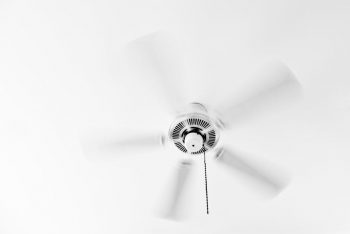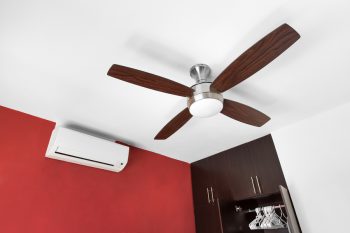
Venting a dryer in a basement is a critical aspect of ensuring your dryer operates efficiently and safely. However, this task might seem daunting due to the unique challenges presented by basements, such as the lack of direct access to an exterior wall. This comprehensive guide will provide you with step-by-step instructions, common mistakes to avoid, safety precautions, and maintenance tips.
Venting a dryer in a basement involves determining the shortest and most direct path to an exterior wall or window, drilling a hole and installing a vent cap, assembling and connecting the ductwork, and testing the ventilation. Ensure to use rigid or semi-rigid metal ducts, comply with local building codes, and maintain regular cleaning for safety and efficiency.
Determining the Ventilation Route
The first step in venting a dryer in a basement is to determine the shortest and most direct path from your dryer to an exterior wall or window. Ideally, the route should be a straight line and avoid as many bends or turns as possible. Excessive turns can trap lint and obstruct airflow, reducing your dryer’s efficiency and increasing the risk of a fire hazard.
Remember, according to most building codes, the maximum allowable duct run is 25 feet for most dryers. Subtract 5 feet for every 90-degree turn and 2.5 feet for every 45-degree turn. If your basement is underground, run the duct up the exterior wall and out the rim joist. Set the vent a minimum of 12 inches above the outside ground.
Drilling and Installing the Vent Cap
Once you’ve determined the best route, punch a 4¼-inch hole on the exterior concrete wall or through the window using a hole saw or masonry drill bits. When installing the vent cap, ensure it is properly sealed to prevent rainwater or pests from entering. Secure the vent cap with screws and caulk its edges with exterior-grade silicone caulk.
Assembling and Connecting the Ductwork
Measure the distance from the dryer to the vent cap, accounting for all bends, and then cut the required length of rigid or semi-rigid metal duct. Assemble the cut pieces of duct pipe, ensuring that the crimped end of the pipe fits into the pipe above it. Attach one end of the ductwork to the dryer’s exhaust port and the other end to the vent cap installed on the exterior of your home. Secure the joints with metal foil tape or hose clamps.
Testing the Dryer Ventilation
After installing the vent, test the dryer ventilation by turning on the dryer and checking outside to make sure the vent flap is opening and hot air is coming out. If not, inspect the ductwork for leaks or obstructions and fix them accordingly.
Common Mistakes to Avoid
When venting a dryer in a basement, avoid these common mistakes:
- Using flexible plastic or foil ducts: These materials can sag, leading to lint accumulation and increasing the risk of a fire. Use rigid or semi-rigid metal ducts instead.
- Neglecting to clean the vent regularly: Lint accumulation can lead to longer drying times, higher energy bills, and even a fire. Clean the vent at least once a year.
- Ignoring local building codes: Always check your local building codes before installing a dryer vent to ensure you comply with all regulations.
Safety Precautions
Safety is paramount when venting a dryer in a basement. Here are some precautions to take:
- Ensure proper ventilation to the outside to prevent moisture buildup and potential fire hazards.
- Use appropriate materials, such as rigid metal ductwork.
- Avoid excessive bends or turns in the ductwork to prevent lint accumulation and hindered airflow.
- Clean the lint filter before drying each new load of clothes and have the dryer duct and vent professionally cleaned and inspected annually.
Maintenance Tips for Optimal Performance
Regular maintenance is key to ensuring your dryer vent operates optimally. Here are some tips:
- Clean the lint trap after every use.
- Inspect and clean the dryer vent system at least once a year.
- Use a vacuum with a hose attachment to clean the dryer vent.
- Check the exterior vent cover to ensure it is free of debris and functioning properly.
- Replace damaged or improper vent materials.
By following these steps, you can successfully vent a dryer in a basement, improving the efficiency of your dryer and ensuring the safety of your home.
Frequently Asked Questions
What type of drill bit should I use for drilling through concrete?
You should use a masonry drill bit for drilling through concrete. These bits are designed to handle the hardness of concrete.
What’s the difference between rigid and semi-rigid ductwork?
Rigid ductwork is made of solid metal and doesn’t bend, making it the most durable and safest option. Semi-rigid ductwork, on the other hand, can bend slightly but still offers more protection than flexible ductwork.
Can I use duct tape to secure the joints of the ductwork?
No, it’s not recommended to use duct tape as it can deteriorate over time due to the heat from the dryer. Instead, use metal foil tape or hose clamps which are more heat resistant.
How can I tell if my dryer vent is clogged?
Common signs of a clogged dryer vent include clothes taking longer to dry, a burning smell during operation, and the dryer becoming excessively hot. If you notice these signs, inspect and clean your vent as soon as possible.
Is it okay to vent my dryer into the garage or attic?
No, it’s not safe to vent a dryer into a garage or attic. The moist air from the dryer can cause mold growth and other issues. Always vent your dryer to the outside.












